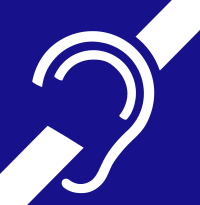
Touch-induced face conditioning is mediated by genetic variation in opioid but not oxytocin receptors
Sign Up to like & getrecommendations! Published in 2018 at "Scientific Reports"
DOI: 10.1038/s41598-018-27199-2
Abstract: Soft touch possesses strong prosocial effects that facilitate social bonding and group cohesion in animals. Touch activates opioids (OP) and oxytocin (OXT), two neuromodulators involved in affiliative behaviors and social bonding. We examined whether touch… read more here.
Keywords: variation; induced face; conditioning; touch induced ... See more keywords

Touch-induced mechanical strain in somatosensory neurons is independent of extracellular matrix mutations in Caenorhabditis elegans
Sign Up to like & getrecommendations! Published in 2020 at "Molecular Biology of the Cell"
DOI: 10.1091/mbc.e20-01-0049
Abstract: Cutaneous mechanosensory neurons are activated by mechanical loads applied to the skin, and these stimuli are proposed to generate mechanical strain within sensory neurons. Using a microfluidic device to deliver controlled stimuli to intact animals… read more here.
Keywords: touch induced; mechanical strain; induced mechanical; caenorhabditis elegans ... See more keywords

Touch-induced seedling morphological changes are determined by ethylene-regulated pectin degradation
Sign Up to like & getrecommendations! Published in 2020 at "Science Advances"
DOI: 10.1126/sciadv.abc9294
Abstract: Mechanical force–repressed pectin degradation alters cell wall mechanics in control of cell growth and tissue morphogenesis. How mechanical forces regulate plant growth is a fascinating and long-standing question. After germination underground, buried seedlings have to… read more here.
Keywords: degradation; morphological changes; touch induced; pectin degradation ... See more keywords

Rapid habituation of a touch-induced escape response in Zebrafish (Danio rerio) Larvae
Sign Up to like & getrecommendations! Published in 2019 at "PLoS ONE"
DOI: 10.1371/journal.pone.0214374
Abstract: Zebrafish larvae have several biological features that make them useful for cellular investigations of the mechanisms underlying learning and memory. Of particular interest in this regard is a rapid escape, or startle, reflex possessed by… read more here.
Keywords: touch induced; rapid habituation; habituation; larvae ... See more keywords